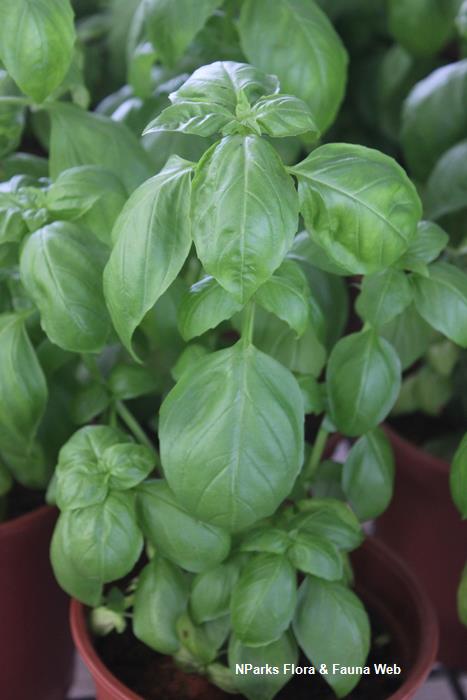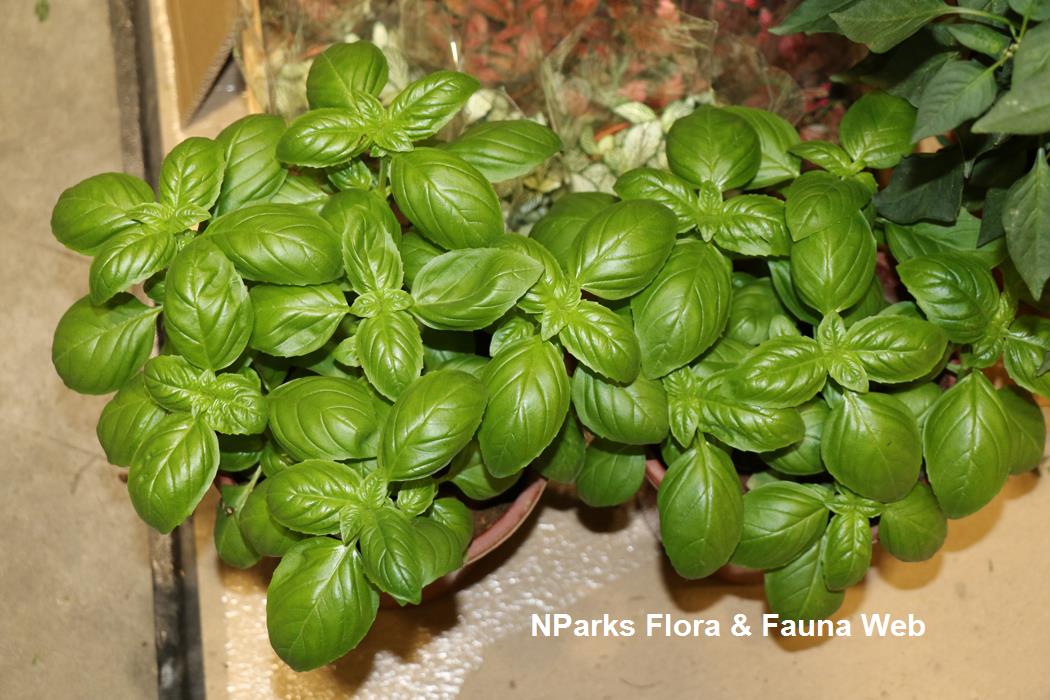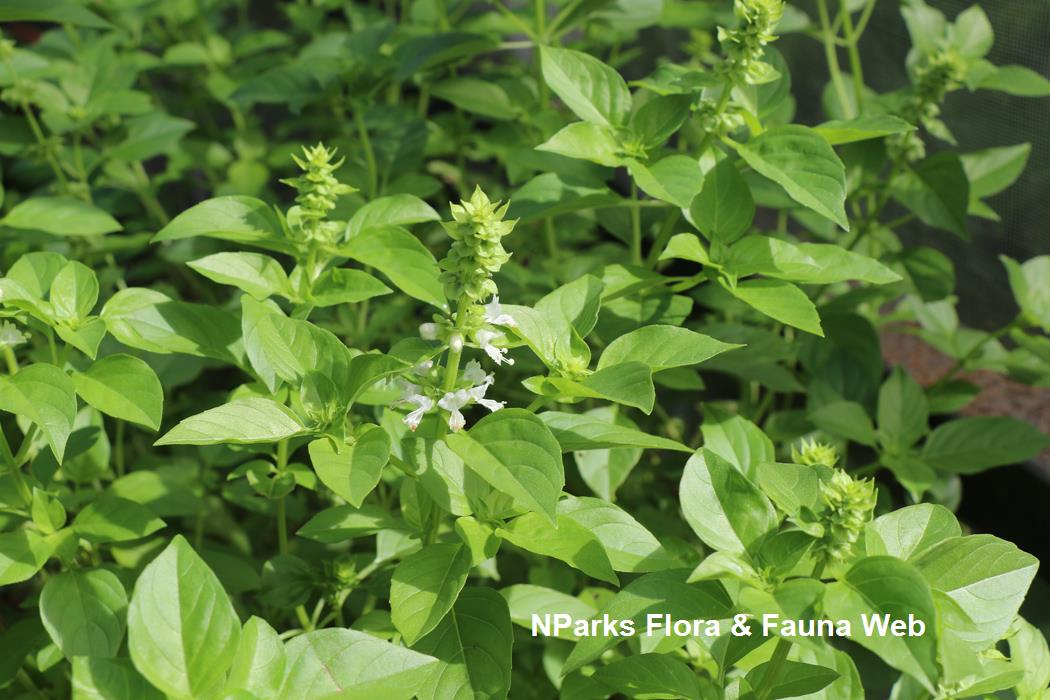
Name
Classifications and Characteristics
| Plant Division | Angiosperms (Flowering Seed Plants) |
|---|---|
| Plant Growth Form | Shrub |
| Mode of Nutrition | Autotrophic |
| Maximum Height | 45 cm to 60 cm |
Biogeography
| Native Distribution | This cultivar is of horticultural origin. |
|---|---|
| Preferred Climate Zone | Temperate |
| Local Conservation Status | Non-native (Horticultural / Cultivated Only) |
Description and Ethnobotany
| Growth Form | Herb plant up to 0.6 m tall. |
|---|---|
| Foliage | Shiny, broad leaves are oval and sparsely lined with minute teeth. The edge of the leaf curls under over time, forming a cupped shape. The leaf blade bulges between the veins, creating a wrinkled texture. |
| Stems | The stem is green and 4-sided. |
| Cultivation | It grows best when grown in a sunny spot that is protected from the wind and intense afternoon sun. It is prone to attack outdoors by slugs and indoors by whiteflies and aphids. The stem tips should be removed regularly by pinching to promote a bushy growth form. The flowering stalk should be quickly removed, because flowering plants have less flavour and shorter life span. |
| Ethnobotanical Uses | Edible Plant Parts : Edible Leaves Food (Herb or Spice): The leaves have a sweet, but slightly spicy taste and aroma similar to that of anise. In Italy, the leaves are often used to make pesto. |
Landscaping Features
| Landscape Uses | Small Gardens, Container Planting |
|---|---|
| Thematic Landscaping | Fragrant / Aromatherapy Garden, Economic Garden |
Plant Care and Propagation
| Light Preference | Full Sun |
|---|---|
| Water Preference | Moderate Water |
| Rootzone Tolerance | Well-Drained Soils, Fertile Loamy Soils |
| Pest(s) | Chewing Insects |
| Propagation Method | Stem Cutting |
Foliar
| Mature Foliage Colour(s) | Green |
|---|---|
| Mature Foliage Texture(s) | Smooth |
| Foliar Type | Simple / Unifoliate |
| Foliar Arrangement Along Stem | Opposite |
| Foliar Attachment to Stem | Petiolate |
| Foliar Shape(s) | Non-Palm Foliage (Oval) |
| Foliar Venation | Pinnate / Net |
| Foliar Margin | Serrulate |
| Foliar Apex - Tip | Acute |
| Foliar Base | Acute |
Image Repository
Others
| Master ID | 31893 |
|---|---|
| Species ID | 6294 |
| Flora Disclaimer | The information in this website has been compiled from reliable sources, such as reference works on medicinal plants. It is not a substitute for medical advice or treatment and NParks does not purport to provide any medical advice. Readers should always consult his/her physician before using or consuming a plant for medicinal purposes. |






